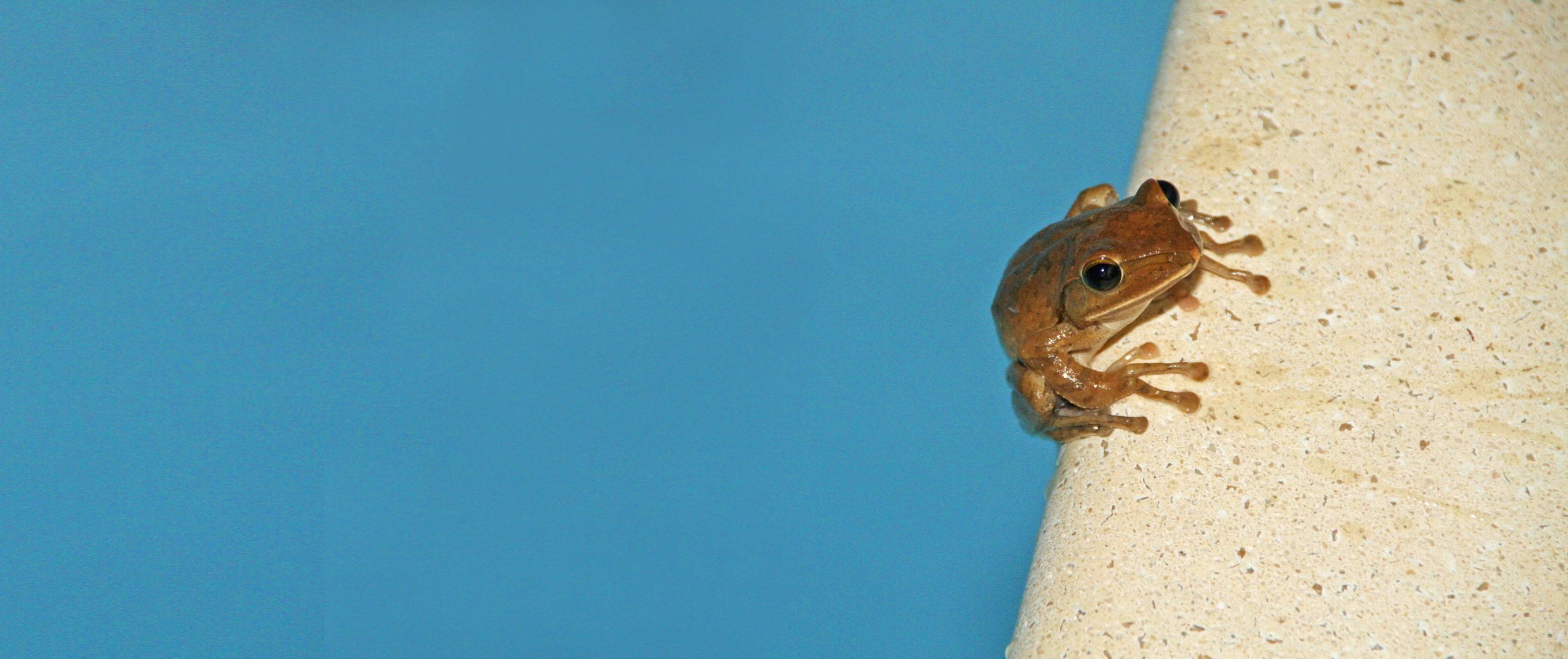
How to Keep Frogs and Other Small Animals Out of Your Swimming Pool
Pool Maintenance | Options and Accessories | Swimming Pool FAQs | Swimming Pool Accessories | Pool landscaping
Frogs are everywhere… including, unfortunately, many swimming pools.
You might have recently pulled your skimmer bucket out, only to come face to face with the awful sight of a dead frog or two. You might also have been lucky enough to scoop a struggling amphibian out of the water before it could drown.
And it’s not just frogs, either. Pool owners often find all kinds of animals -- mice, moles, chipmunks, turtles, lizards, and so on -- in their pools, for one simple reason: animals are drawn to water, just as we are.
Why make an effort to keep frogs out of your pool?
Wildlife in your swimming pool tends to be bad news for the health of your pool water. Amphibians like frogs, and many other reptiles, can carry salmonella and other dangerous bacteria. Other animals may have different harmful microorganisms on or in them, especially if they relieve themselves (take a poo) in fear, or just to heed the call of nature, while searching for a way out of the pool.
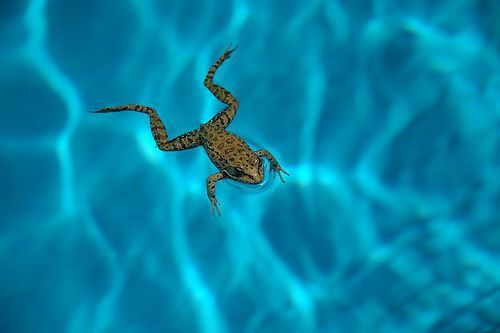
Frogs need to be near water for a healthy life, but they can’t tell the difference between a safe, natural pond of water and a chemically-treated manmade swimming pool. Many other animals can fall into your pool by accident, or they might jump in on purpose without knowing what they’ve gotten into.
Unfortunately, small animals often can’t find their way out of pools once they’ve fallen in. Without an easy exit, wildlife can exhaust themselves while frantically trying to escape, until they’re so worn out they’re pulled into your filter system, where they drown.
The treatments used in most pools can also quickly become toxic to small animals, especially amphibians like frogs and salamanders, which have highly absorbent skin that readily draws dangerous chemicals into their bodies.
And of course, dead animals of any type are breeding grounds for unwanted microorganisms. There’s a reason we’re instinctively repulsed by the sight and smell of decay -- it’s never a healthy habit to hang around dead things.
You should always try to keep these animals out of your pool and skimmer bucket if we can avoid it… and you certainly can avoid this unpleasant outcome.
You have several options when it comes to keeping frogs and other small animals out of your pool. Let’s take a look at some easy solutions, from proactive prevention to in-pool escape mechanisms…
Trim trees and keep foliage away from your pool perimeter
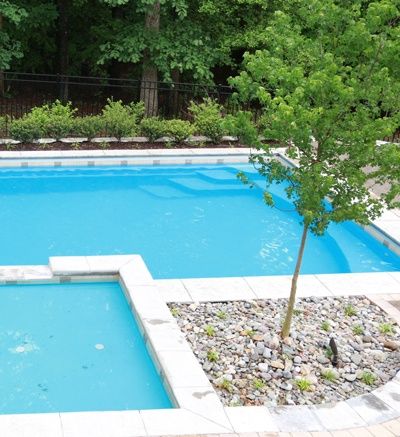 Animals generally need places to hide from predators. Some frogs climb trees, and some don’t. However, many other animals, including somewhat larger critters like squirrels, opossums, snakes (yes, really), and even young birds, will stick to the tops of trees to stay safe, and sometimes they can lose their balance and fall off.
Animals generally need places to hide from predators. Some frogs climb trees, and some don’t. However, many other animals, including somewhat larger critters like squirrels, opossums, snakes (yes, really), and even young birds, will stick to the tops of trees to stay safe, and sometimes they can lose their balance and fall off.
Bushes, shrubs, and other low-lying foliage also offer easy places to hide and can be havens for smaller animals. Everyone wants a beautiful backyard, but you need to be aware of the risks to animals when you’ve got plants and trees near the edge of your pool.
Try to keep your pool landscaping well away from the pool perimeter, and trim overhanging tree limbs whenever possible.
Animals will be less likely to jump in your pool if they see a large open space between it and any cover -- the risk of predation often outweighs the benefits of “fresh” water for these critters, so they’re much less likely to scamper 12 feet from shrub to pool than they might be if your bushes are within arm’s reach of your pool’s edge.
Also consider removing potential food sources from your backyard. If a frog or other animal wanders into the vicinity of your pool because it found something tasty, it’ll be much more likely to jump in for a swim after its snack than it would’ve been without such natural lures.
If you’re really committed to the idea of planting a backyard garden or some other potential food source for wildlife, do so as far away from your pool as possible.
Install barrier fencing
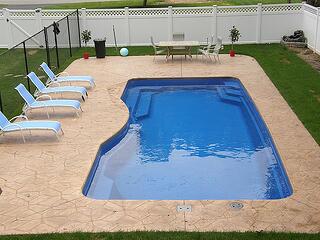 Some fences are better than others at keeping small animals out of your backyard. A standard slat-type wooden fence won’t be much of an obstacle to a frog, but a solid fence, or one with small gaps that go all the way to the ground might effectively block these critters from getting near your pool.
Some fences are better than others at keeping small animals out of your backyard. A standard slat-type wooden fence won’t be much of an obstacle to a frog, but a solid fence, or one with small gaps that go all the way to the ground might effectively block these critters from getting near your pool.
This solution can be costlier and more regulated than others. If you already have fencing installed, replacing it can be burdensome. If you don’t have fencing yet, you should check your local building codes and ask your homeowner’s association (where relevant) to determine whether or not you can even install a proper barrier fence at all.
Want to know what a new pool might cost with fencing installation included? Try our free Pool Design and Pricing tool by clicking the button below:
Cover your pool when you’re not using it
Animals can’t fall into your pool if it’s covered!
Seems pretty simple, doesn’t it?

Most people get swimming pool covers to keep leaves and other debris out of their pools, but a durable cover can also be an excellent safety net for small animals.
When considering a pool cover, look for those made of material that can stand up to small claws. Depending on your location, you may end up saving more squirrels and chipmunks than frogs, and rodents generally have sharp claws to dig or climb.
A mesh or net cover can also serve the purpose of keeping animals safe, depending on the size of the gaps between the fabric netting. Tears in net or mesh covers also tend to be more easily addressable than tears in solid covers, which may need to be repaired with unsightly patches that don’t match your cover’s original color.
Solid pool covers can also serve to disguise or hide the water in your pool, making it less attractive to frogs and other wildlife, and thus less likely any of them will jump or fall in.
This can certainly help keep your long-term maintenance costs down, as certain types of pool covers can be costly, particularly solid automatic covers.
Get some scary-looking pool floats
Prey animals like frogs are easily spooked. Their instincts will tell them to steer well clear of anything that looks like a predator, especially if it’s moving.
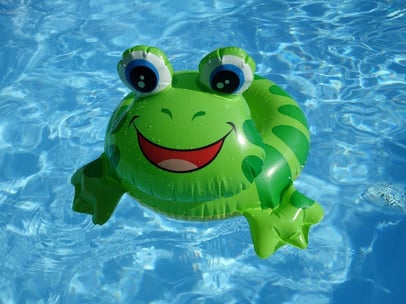
For this reason, a large and intimidating pool float or raft can be a great low-cost way to scare wildlife away from your pool.
A float shaped like an alligator, dragon, tiger, or some other large scary animal might freak out frogs and chipmunks and the like before they even consider hopping into your pool. Common designs like flamingoes and unicorns may also do the trick simply because of their large size and unfamiliar appearance.
The downside to this approach is that pool floats aren’t generally designed to float in your pool all the time. You may need to replace your floats more often if you start using them as wildlife deterrents, simply because the elements will wear them down and cause leaks or tears, whether or not any live animals ever touch them.
Run your automatic pool cleaner at night
An automatic or robotic pool cleaner can also serve as a deterrent, for similar reasons to those mentioned for pool floats. It’s a fairly large, unfamiliar thing that’s continually in motion in your pool water. Frogs and other small wildlife may see these cleaners in action and “nope” right out of your backyard.
Turn off the lights and turn on the water features (and heater)
Animals are attracted to lights at night. If you’re not using your pool, you shouldn’t have its lights on -- but you can keep moving water features like pool waterfalls, jets, and bubblers running at night.
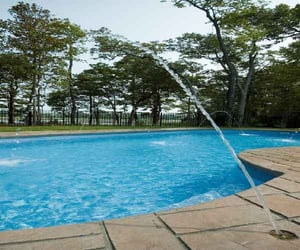
Frogs need calm water to lay their eggs, so mama frogs will probably steer clear of a pool with large volumes of circulating water, whether it’s from water features or clearly visible filter pump activity.
However, other animals might be attracted to running water, especially if you’re in an area with lots of streams and other natural moving bodies of water. You’ll need to weigh the value of deterring frogs against the potential for attracting other animals based on your local conditions.
Heated pools can also deter frogs and other wildlife, simply because animals don’t expect or seek out warm water the way we humans do. If your pool is warmer than it might otherwise be without mechanical assistance, it could serve as a warning to critters to stay away… assuming they’ll be able to tell if the pool is too hot before getting into it.
Want to know what a new pool might cost with these optional features included in your installation project? Try our free Pool Design and Pricing tool by clicking the button below:
Use natural or chemical deterrents
Some plants serve as anti-food sources -- their smell or appearance can warn frogs and other small animals away from your pool perimeter. The strong smell of peppermint tends to not be pleasant to many animals, and basil can also be an effective deterrent against some -- but not all -- wildlife.
You can also spread certain household items around your pool perimeter. Diluted vinegar is unpleasant to many animals and can be easily sprayed around your pool. Lemon juice and other citric acids work similarly to vinegar -- they’re all highly acidic, which tends to be a clear sign that animals should steer clear.
Used coffee grounds are also conveniently obtained if you regularly drink coffee, and you can sprinkle this around your pool perimeter to ward off wildlife.
Install helpful accessories on the edge of your pool
You may have a set of built-in pool stairs and a large shallow tanning area, but that doesn’t mean frogs and other small critters will know to use them or even be able to find them in the dark while they’re frantically scrambling to escape.
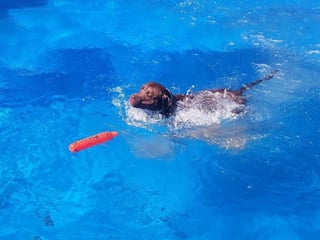
There are several products tailor-made to help frogs, other critters, and even the family dog (or cat, if you’ve got a particularly aquatically-minded cat) get out of any part of your pool. Most are quite inexpensive, so you could easily install several around the deeper parts of your pool to save even the dumbest and/or most freaked-out critters:
The FrogLog is one of the pool world’s most popular critter-saving devices. It’s just $20, and it attaches itself to the edge of your pool to serve as a platform atop the water, with a little bridge to dry land for easy exit.
The Critter Skimmer is designed to help frogs and other small critters that have already gotten themselves stuck in your skimmer basket. It adds a spiral “staircase” to the skimmer so these animals can easily get out without being suctioned to death by your filter system. Combine it with the FrogLog to help the smarter and dumber frogs in your area… or at least the more energetic ones that can find the FrogLog and the more exhausted ones that get pulled into your skimmer.
The SkamperRamp is similar to the FrogLog, but it’s somewhat less aesthetic. It’s also larger and costlier, and it comes in two sizes -- one for smaller dogs and cats (as well as frogs and other little critters), and a Super size for larger dogs like labs and German shepherds. If you think you might ever have an issue with deer or large turtles getting stuck in your pool, the Super SkamperRamp might be for you.
SkamperRamp also makes the Paws Aboard Doggy Boat Ramp, which is intended for more nautical uses. If you’ve got a pool and a boat, you can solve all your pet-in-the-water problems with a single shopping cart checkout.
You might not be able to save every frog and other animal that falls into your pool, but you can certainly do your part to minimize their potential pain and suffering. We hope this article helps you keep those critters safe!
At River Pools, we manufacture world-class fiberglass pools for customers across North America. If you're shopping around for a fiberglass pool, feel free to take a look at our catalog of models, visit our extensive video library, try out our pool cost calculator, or request custom pricing using the button below.






